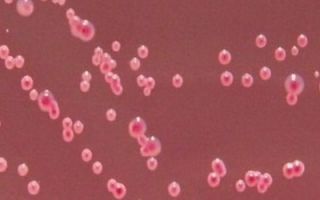Yersinois is an acute infectious disease caused by Yersinia pseudotuberculosis (pseudotuberculosis) or Yersinia enterocolitica (intestinal yersiniosis).
Content
What is yersiniosis?
This is an intestinal infection , which is characterized by primary damage to the intestines and the possibility of systemic damage to organs and the musculoskeletal system.
Once in the intestine, Yersinia penetrates into the lymphoid formations of the ileum , into the lymph nodes of the mesentery and causes their inflammation.
With weak immunity, bacteria are able to survive for a long time in the human body and remain in it until the protective forces are sharply weakened, for example, during stress, overwork, hypothermia and other excessive stress on the body. During this period, they begin to multiply rapidly and cause a new exacerbation of the disease. This leads to a protracted, chronic course of yersiniosis.
The affected areas are located mainly in the final (distal) ileum. When infection spreads and bacteria enter the blood, blood poisoning and damage to organs such as joints (arthritis), liver (hepatitis), kidneys (nephritis), heart (myocarditis), etc. are possible.
Symptoms
The incubation period of pseudotuberculosis ranges from 3 to 18 days, intestinal yersiniosis - within 1-6 days.
Symptoms of the disease are varied, their severity depends on the form of the disease.
The disease begins acutely:
- body temperature rises,
- lymph nodes become inflamed,
- abdominal pain appears,
- diarrhea mixed with blood and mucus,
- in 20% of cases catarrhal phenomena,
- joint pain,
- skin rash,
- burning in the palms and soles,
- peeling of palms and soles.
Along with the gastrointestinal, other forms of clinical course are possible: appendicular, arthritic, septic and subclinical.
Appendicular form
Its name is due to the fact that the development of the disease occurs in the final section of the ileum, where it connects to the cecum. Therefore, its inflammation is characterized by the appearance of pain in the right hypochondrium, sometimes by symptoms of an acute abdomen. And the process of inflammation of the small intestine can sometimes involve the appendix (appendix) and the cecum. Inflammation may result in necrosis of a section of the intestine.
Arthric form
Differs in the development of polyarthritis and symptoms of myocarditis. In the blood, leukocytosis is observed with a shift towards band forms, eosinophilia and an increase in ESR to 30-80 mm/h. Typically, these symptoms appear 1-2 weeks after the onset of the disease and are often regarded as a manifestation of an allergic reaction. The disease usually lasts from several days to 3 months.
Septic (generalized) form
This form of the disease is characterized by a severe course and damage to other organs and systems. Hepatitis with jaundice, nephritis, uveitis, iridocyclitis, skin rashes, etc. develop.
How can you get infected?
An important property of Yersinia is its ability to withstand low temperatures. So it is able to reproduce at a temperature of +4-+8 degrees, does not die when re-freezing, is able to exist for a long time in soil, water, on various food products, and in conditions of low temperature and high humidity it reproduces and accumulates well. Moreover, only strains that have passed the stage of reproduction on products stored in the refrigerator can cause disease.
The causative agent of the disease quickly dies when exposed to direct sunlight, high temperature; when boiled, it dies in 10-30 seconds. Disinfectants (for example, 3% chloramine solution) kill the microbe within 1-2 hours.
Yersinia is often found in nature, it is isolated from the feces of mammals (especially often pigs, rodents), birds, fish, amphibians, insects, and is found on vegetables, in soil and water.
Most often, infection occurs through food. As noted above, the bacterium does very well in the refrigerator. Infection with pseudotuberculosis often occurs through salads made from raw vegetables. Cabbage is especially dangerous for infection.
The source of infection with intestinal yersinia is cattle, sick people and other products infected with yersinia (raw milk, meat). Diseases are predominantly isolated.
Diagnostics
Clinical diagnosis of the disease is difficult. The correct diagnosis is established only by using serological laboratory methods.
Yersinia is isolated from feces, but they can be found in blood, urine and mucous membrane washings.
Convincing confirmation of the diagnosis is the detection of antibodies in the blood serum of at least 1:160 and their change during treatment.
X-ray and endoscopic examination of the ileum reveals numerous nodules of lymphoid hyperplasia of the ileum.
It is very difficult to distinguish yersiniosis from Crohn's disease. Only positive serological reactions allow an accurate diagnosis. In the appendicular form, it is necessary to exclude acute appendicitis in the patient.
Treatment
Yersiniosis is always treated in hospital, even in mild forms. It is very important to carry out effective therapy in a timely manner so that it does not become chronic.
Treatment is carried out with antibiotics for 7-10 days.
To cleanse the body of toxins, solutions of trisol, quartasol or disol are administered, and drinking plenty of fluids is recommended.
For septic form, non-steroidal anti-inflammatory drugs are prescribed.
During the process of treatment and recovery, irritable bowel syndrome .
Prevention
A healthy person resists yersiniosis infection well. People with weakened immune systems are susceptible to the disease.
To protect yourself and your family, you need to wash vegetables well, especially those from the refrigerator, and scald them with hot water. It is recommended to remove the top 5 leaves from white cabbage and pour boiling water over it.


 (8 ratings, average: 4,50 out of 5)
(8 ratings, average: 4,50 out of 5)




